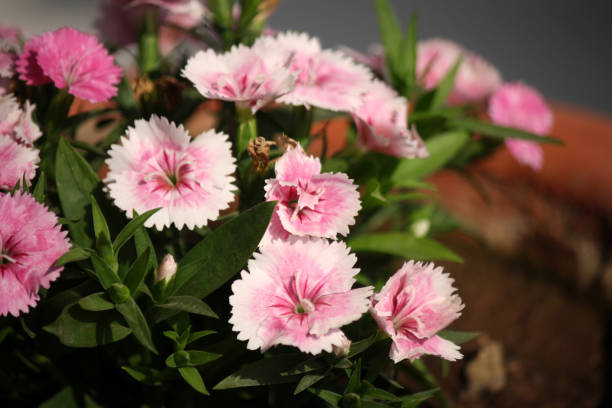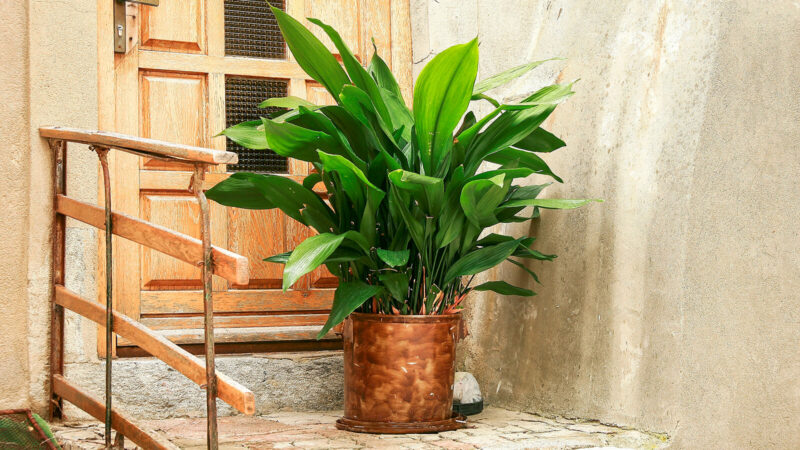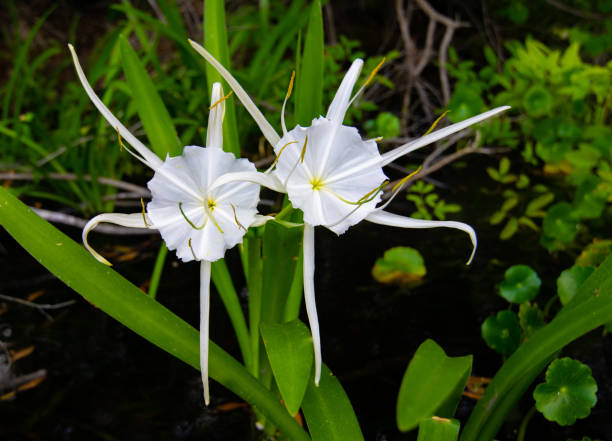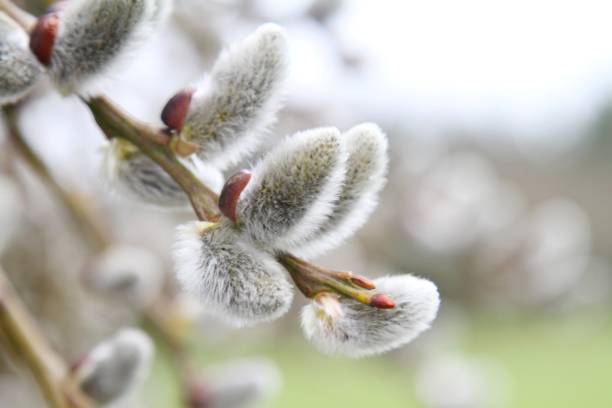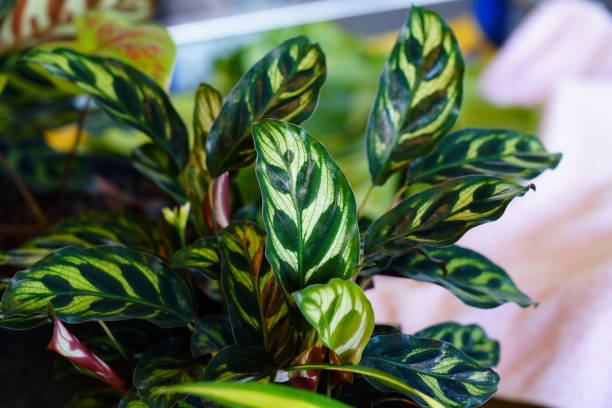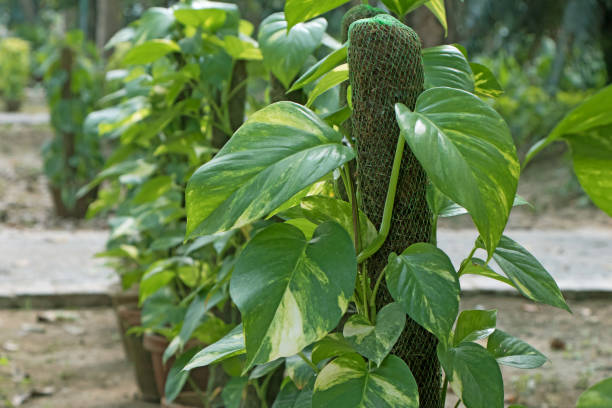Eye-Catching Types of Peperomia Plants
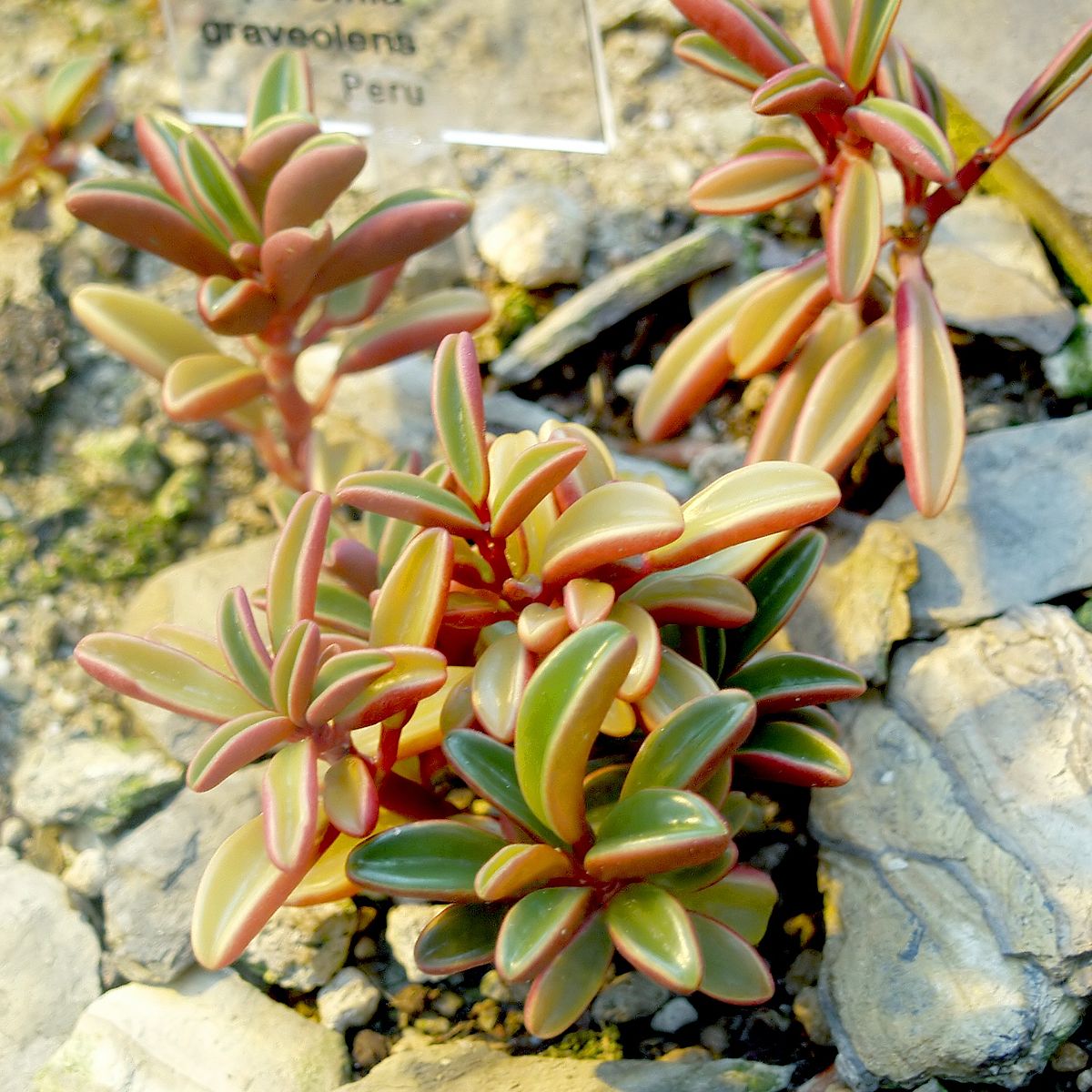
The peperomia plants are tropical plants that are compact and have ornamental foliage along with fleshy leaves. There are over 1,500 types of peperomia, out of which many are very popular as a houseplant.
The peperomia varieties have different leaves, colors, and foliage, depending on the varieties you choose. Other than their compact size, their attractive foliage and easy care make them popular houseplant-like pothos that you can grow as indoor houseplants. However, not every variety is worth your time and effort.
In the article below, we have selected some of the best peperomia types you can have to add a charm and something useful to your home interior.
Popular Types of Peperomia Plants
These are some of the most popular varieties of peperomia which you can have for your home:
Peperomia Obtusifolia
This is one of the most popular peperomia varieties which you can have for your home. It has upright stems along with thick oval, succulent, and dark green leaves. This variety of the peperomia is a small bushy type of plant which grows upto a height of 30 cm. It has glossy foliage, which is evergreen and needs a good amount of light to maintain its intense color of leaves.
This peperomia variety is also known by various other names like the American rubber plant, face peperomia, and more.
In season you can also see insignificant flowers in this plant which are spiked as on most of the peperomia varieties. However, it is not common thing for this plant to flower in indoor conditions. However, if it gets proper climate, then it can flower indoors also. The good thing about such types of peperomia is that they have many fascinating variegated cultivars.
Peperomia Prostrata
The peperomia prostrata is a hanging peperomia variety that has cascading foliage along with oval leaves. In the leaves of this peperomia type, there are veins that are light green in color and make it appear like a turtle’s shell. The peperomia plant is a variety that has vining stems that can grow upto a length of 30 cm.
Although these peperomia types are an excellent option for the hanging baskets, spreading growth also makes it a good option for other areas. You can use it at a plant for shelves, desktops, and dish gardens. This plant needs light pruning if you want to keep its trailing stems in shape and under control.
One thing which you need to know about this plant is that it can be hard to grow as it has delicate stems and leaves. Other than this, the peperomia prostrata is also susceptible to changes in temperature. Thus instant changes in the temperature may lead to leaf fall. The repotting of this variety is also tricky as its stems break easily. Thus it cares needing variety which needs a dedicated person with experience in gardening.
Trailing Jade Peperomia
This type of peperomia is a trailing plant and has glossy green and round leaves. The leaves of this plant are in the shape of buttons and are fleshy and thick, which are similar to the succulent leaves. This plant gets a bushy appearance as when the dangling stem grows; they get intertwined together. Three intertwinings of the stem of this plant also make it look captivating.
The trailing jade peperomia are also epiphytes which prefer shades for growing along with moist conditions. This makes it essential that if you pot this plant in the hanging baskets, then mist its leaves on a regular basis. You also need to be careful that the soil you use in the basket doesn’t get waterlogged. You also need to provide this plant with an optimum temperature of between 18 degrees Celsius to 24 degrees Celsius for best results and growth.
Some other common names by which the trailing jade plant is famous are the creping button, jade necklace, and round leaf.
Watermelon Peperomia
The watermelon peperomia have oval and heart-shaped leaves which have slight silver stripes on them. This makes them resembling the rind of the watermelon. In comparison to the other types of peperomia, the watermelon leaves are large and fleshy. These fleshy leaves of this plant are attached to the stems, which are maroonish red in colors. This color of the stems adds to the attractiveness of this plant.
A most astonishing and attractive feature of this type of peperomia is their leave. The leaves of these plants are unique in patterns and shapes. These plants grow outside of the temperatures zones 10 and 11 of USDA. in these temperatures; it grows best as the evergreen perennial house plants. Thus, you need to provide these plants with indirect but bright sunlight along with often watering when the soil dries up for best results.
Like other types of peperomia, this variety is also drought-tolerant, and thus it will be thriving even if you skip watering it some days.
Peperomia Hope
This is one of the best plants if you want something for the hanging baskets. The peperomia hopes have trailing long steam, which grows fleshy, thick, and small leaves in a group of three to four. The good thing is that they are compact in size, and this makes them a great option if you want something for tight spaces or small spaces. This also makes it a great option when you want a plant for desktops as its growth is slow.
Other names for this peperomia variety include four leaved peperomia and acorn peperomia. Its botanical name is Tetraphyll, and this means four leaves in the Latin language. This plant is also made of a mixture of two plants and is a hybrid. It is a mix of peperomia quadrifolia and peperomia deppeana.
The oval and small leaves of the plant and trailing stems may make the onlookers confuse it with jade variety in some cases. But the leaves of this plant are thicker when you compare them to other peperomia varieties.
Parallel Peperomia (Peperomia Puteolata)
The parallel peperomia have lance-shaped dark green leaves which have silver veins or stripes on them. These strips give the peperomia puteolata a captivating look. These stripes on the leaves of this plant also make it look similar to the watermelon peperomia. Only difference which you will notice between the two variegated peperomia varieties is that parallel dont have round leaves.
The foliage of this eye-catching peperomia puteolata grows on a reddish upright stem. Its foliage is trailing in nature which makes it a great option for hanging baskets. If you provide this plant with proper growing conditions, then it can grow upto a height of 45 cm. The good thing about these plants is that they are very straightforward when you want to grow them indoors. All you will need is a lot of indirect but bright light. The light is essential for keeping the foliage green and silver colors vibrant.
Like the other peperomia varieties, this plant also needs watering only when the soil is dry and is drought tolerant to a level.
The small seized peperomia plants often tend to have upright growth. This plant stems trail and droops as soon as it grows large in size and trails over the edges of the pot. The green and silver foliage of this peperomia varieties also makes it a great option if you want something for your bright interiors.
Peperomia Rosso
The peperomia ‘Rosso’ has leaves of dark green color along with reddish-brown undersides, which makes them look stunning. There are also deep ribs on the long pointed leaves of this plant which makes the look rippled. This plant has a bushy and compact growth habit, and the green-red leaves of this plant are highly ornamental; this makes it perfect for small spaces. The lance-shaped leaves of this plant grow up to a length of 4 cm.
These types of peperomia with their dark leaves are also an ideal choice if you want something for a shaded room where there is little natural light. However, if you want the Rosso to bloom and flower, then it needs at least a light supply of 11 hours a day. If you provide it with enough light, then it produces small spectacular-looking greenish-white flowers on the spikes or the long erect stems.
Like all other peperomia types, this variety also grows in aerated and well-draining soil and requires bright to medium light. For best results, keep the soil dry and indoor humidity in a range of 40 to 50 percent.
Teardrop Peperomia
The teardrop peperomia is a small and attractive radiator plant that has ovate-shaped leaves. However, various teardrop peperomia have various types of foliage. Some variegated peperomia types have fascinating leaves in green colors which have yellow margins. Other types of peperomia orba have almost yellow and light green leaves. The good thing is that when the plant matures, white lines appear down on the central part of waxy leaves.
This is one of the easy-to-care peperomia varieties and can thrive in almost any of the rooms in your home with little maintenance. In care, you only need to water it when the soil dries up, and you need to provide it with at least medium light.
When you go for teardrop peperomia, then ask for the ‘Pixie Lime’ cultivar as it has various leaves of green variegation. This makes it look amazingly beautiful.
Piper Peperomia ( Peperomia Scandens)
The peperomia scandens is a sturdy vining variety of the plant with thick fleshy leaves in the shape of a heart. When you look at the piper peperomia leaves, you may mistake it for a succulent. However, this plant is epiphytic, which prefers moist and humid conditions along with indirect bright light for optimal growth.
The most attractive feature of the peperomia scandens is its leaves which are light green in color and in the shape of a heart. Due to the shape of its leaves, this plant is also known by the name cupid peperomia. Some plant experts also give it the name of peperomia scandens ‘Green.’
The real beauty of the piper peperomia is that its maintenance and care are very easy. These types of peperomia thrive under the artificial plant lights and need occasional listing and watering.
Ruby Glow Peperomia
The ruby glow peperomia is one of the most captivating peperomia types with curly tongue-shaped leaves which have pink edges and are light green in color. In these plants, the underside of the V-shaped leaves is pink and red in color. These peperomia leaves also look similar to some other species of succulent plants.
The peperomia graveolens have the best growth when you provide them with shade and partial sun on average sun temperatures. This quality of this peperomia variety makes it an ideal option when you want something like indoor houseplants. This variety’s low light tolerance abilities also make it a great option if you want something for those shady corners of your home. The best placement areas for this plant are bedrooms and other low-light areas in the home.
These plants grow up to a height of 25 cm if you provide them with optimal conditions.
The name of this variety of peperomia comes from its blushing pink margins on the leaves. Its botanical name graveolens which translates to “bad-smelling.” This is because if you put your face near this plant, you may get a stinky odor whiff from it.
Peperomia Ruby Cascade
The peperomia ruby cascade is a type of vining plant which has purple and oval green leaves. Its disc-shaped waxy and thick leaves grow on the ruby red color stems and can reach up to 12cm in length. These plants are one of the most favorable peperomia varieties for these hanging baskets as it allows the trail vines to grow as they have enough room.
The leaves of this variety are semi-succulent and store moisture in them, which means the plant needs a marginal amount of care. This variegated peperomia are also tropical plants that have slow growth and feature evergreen foliage. The leaves of this variety also have variations of yellow color blotches around the edges on a very frequent basis. One of the most eye-catching features of these types of peperomia is that they have elements of purple and deep red undersides, which makes them look spectacular.
Peperomia Jelly or Ginny Peperomia
The peperomia Clusiifolia is an astonishing house plant that features multicolor leaves. Its leaves are in green, pink, cream, and red color, which makes them look enticing. The leaves are oval in shape and have green blotches in the center, which are surrounded by creamy-white color patterns making them look fascinating. Its leaves are variegated and elongated.
The edges of the leaves of the peperomia plant with red color give this radiator plant a spectacular look.
Peperomia clusiifolia is also known by the common name of red edge peperomia, jellie peperomia, ginny peperomia and peperomia tricolor. All these names to the plant are given because of the colors on its leaves along with their shape. The pointed leaves, which are compact and oval in shape, make it one of the most beauteous and vibrant houseplants you can have for your home.
This is a variegated peperomia variety, and thus it requires plenty of indirect but bright light for optimal growth. However, you also need to avoid putting it in direct sunlight as it would lead to scorching of its leaves.
These are some of the most popular types of peperomia which you can have for your home. No matter which variety you choose, they will give something ornamental to your home, taking the curb appeal a notch up. The good thing about all of these varieties is that they require minimum maintenance and thus a perfect plant for people who have busy schedules.
Bottom Line
There are numerous types of peperomia plants which you can choose for your home as they are one of the best indoor houseplants. However, choosing the right one which suits your home interior along with maintenance needs is essential.
In all the various types of peperomia, here are some of the varieties which are better than others, whether it’s maintenance, light conditions, or looks.

